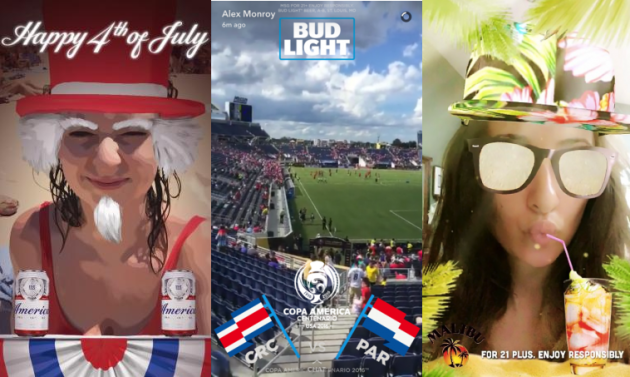
Alcohol marketing has been linked to underage drinking in a new study revealed at the APSAD Scientific Alcohol and Drugs Conference.
The results have found alcohol marketing is reaching a large number of Australian teens, causing young people to drink earlier and in a riskier fashion.
“Australian teens are clearly being reached and influenced by alcohol campaigns, despite current restrictions and regulations in place by advertising boards and social media platforms," Burnet Institute head of sexual health and young people research Dr Megan Lim says.
"We need to rethink our regulations and ensure this at risk group are protected from these campaigns,” she urges.
The study questioned Victorians aged 15-29 years old about ‘following’ different types of alcohol marketing accounts on social media, in addition to questions about alcohol consumption and other risk behaviours.
Overall, 22% of participants ‘followed’ at least one type of alcohol marketing on social media. ‘Liking’ a page was significantly associated with early age of first alcohol consumption, riskier alcohol consumption behaviours, ever using illegal drugs and male gender.
Participants aged 15-17 were equally as likely as older participants to ‘like’ or ‘follow’ alcohol pages.
Alcohol on social media has been a point of contention for industry bodies, with The Alcohol Advertising Review Board (AARB) telling AdNews earlier this year that alcohol brands don’t belong on the platforms as there is no effective way to protect young people.
While you can target certain demographics on Instagram, Snapchat and Facebook, current age-gating capabilities do not prevent under 18-year-olds from ‘following’ alcohol brands.
 The AARB expressed concern alcohol brands would enter Snapchat
The AARB expressed concern alcohol brands would enter Snapchat
This was seen in a case from 2015, where a 12-year-old left a review for a Vodka Cruiser Pineapple Passion Punch on the Dan Murphy’s website, saying: “Had a sip on my 12th birthday, went off my head gr8 flava wud recemend, gud value fo mone.”
“The results of this study are concerning. Social media campaigns to promote alcohol are reaching and engaging large numbers of underage teens and are linked to riskier behaviour and drinking at a young age,” Lim says.
“There is a need to evaluate strategies used by social media moderators and alcohol regulation bodies to reduce the exposure to and potential impact of alcohol marketing pages on adolescents and young adults, and ensure these pages are not accessible to or targeting underage social media users.
Have something to say on this? Share your views in the comments section below. Or if you have a news story or tip-off, drop us a line at adnews@yaffa.com.au
Sign up to the AdNews newsletter, like us on Facebook or follow us on Twitter for breaking stories and campaigns throughout the day.


